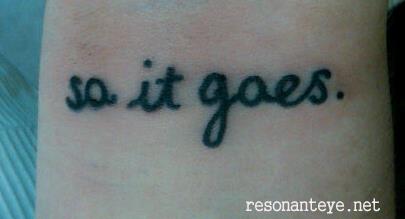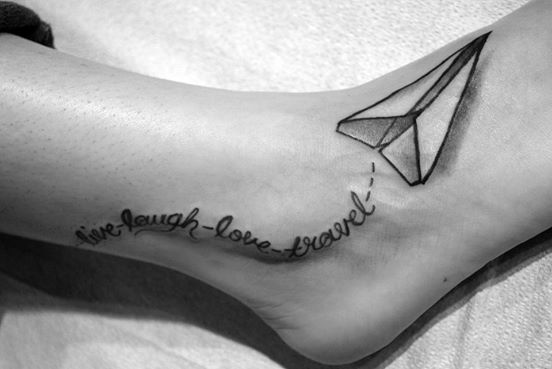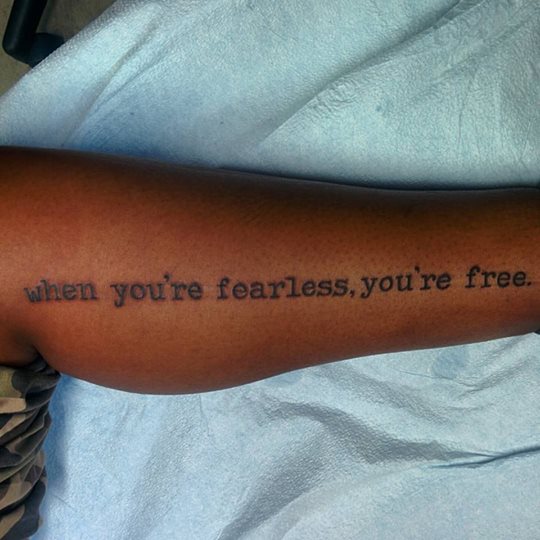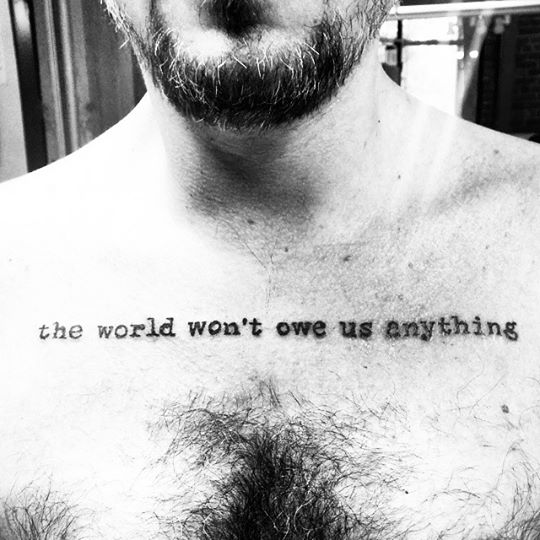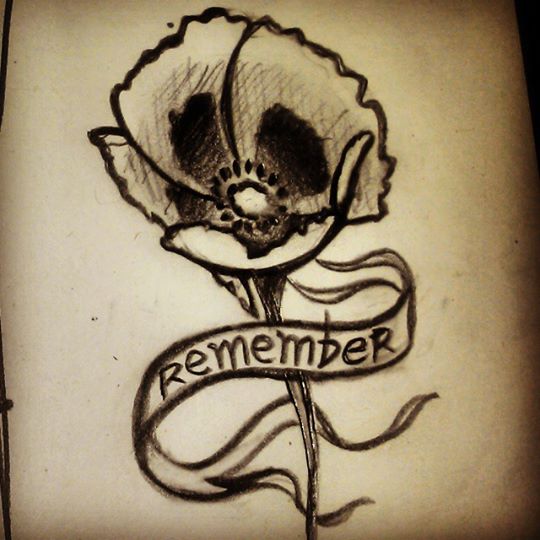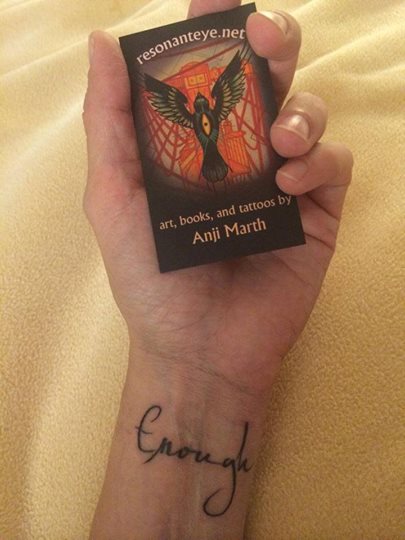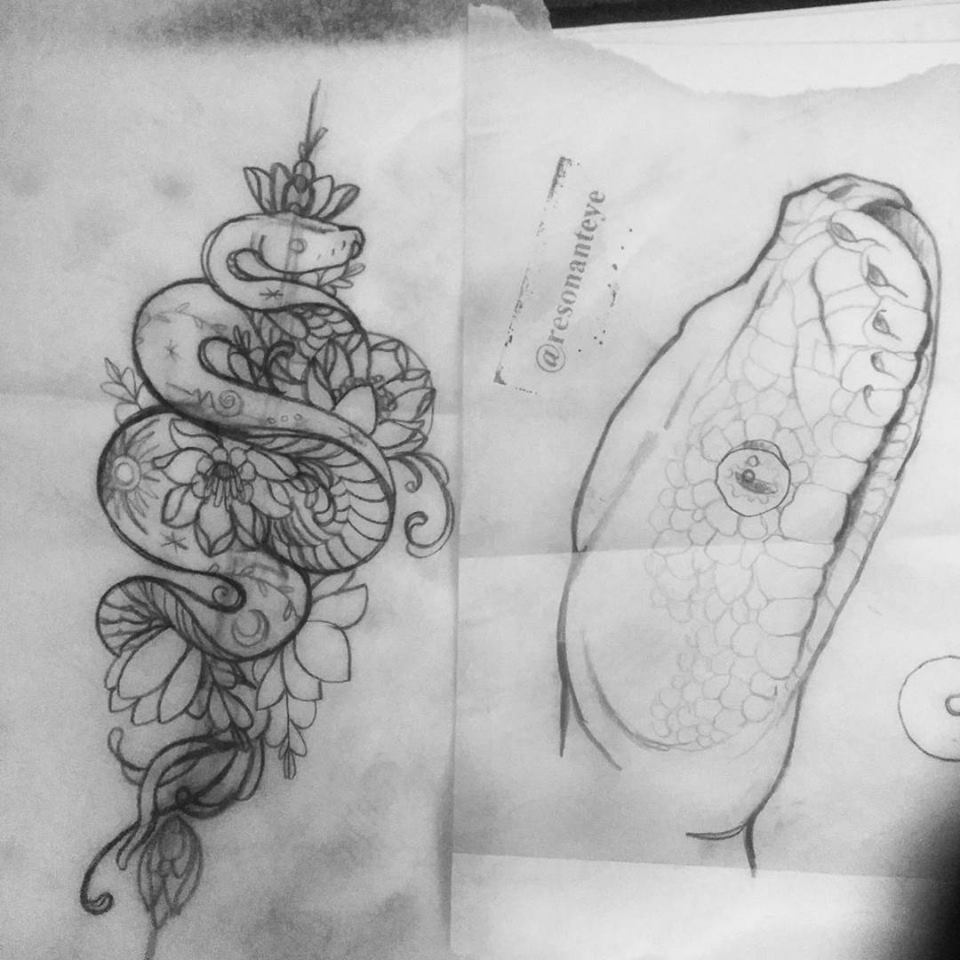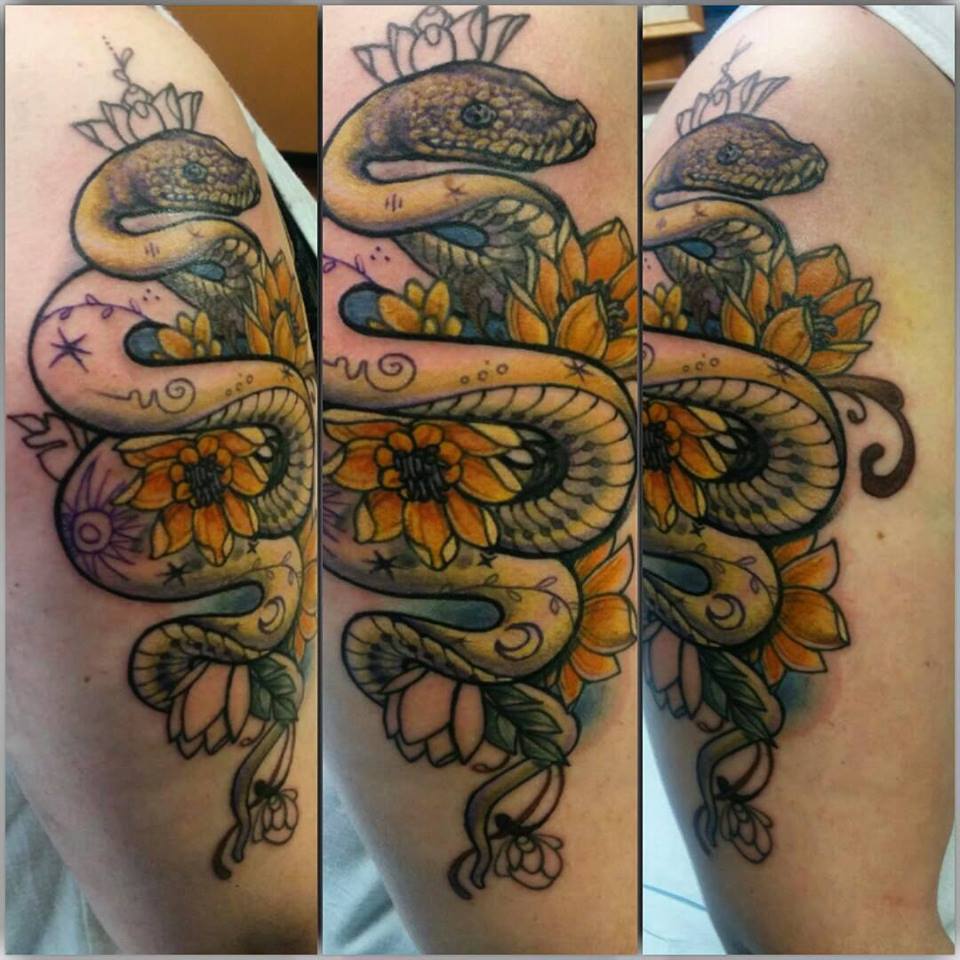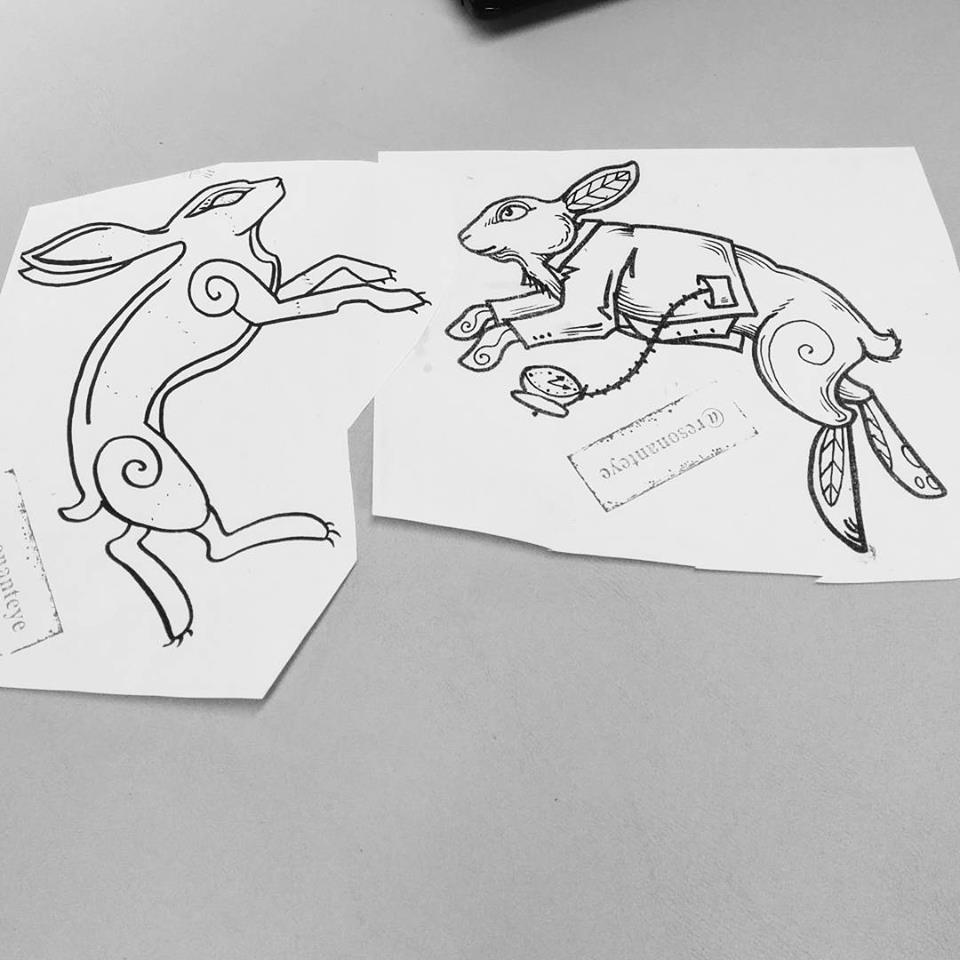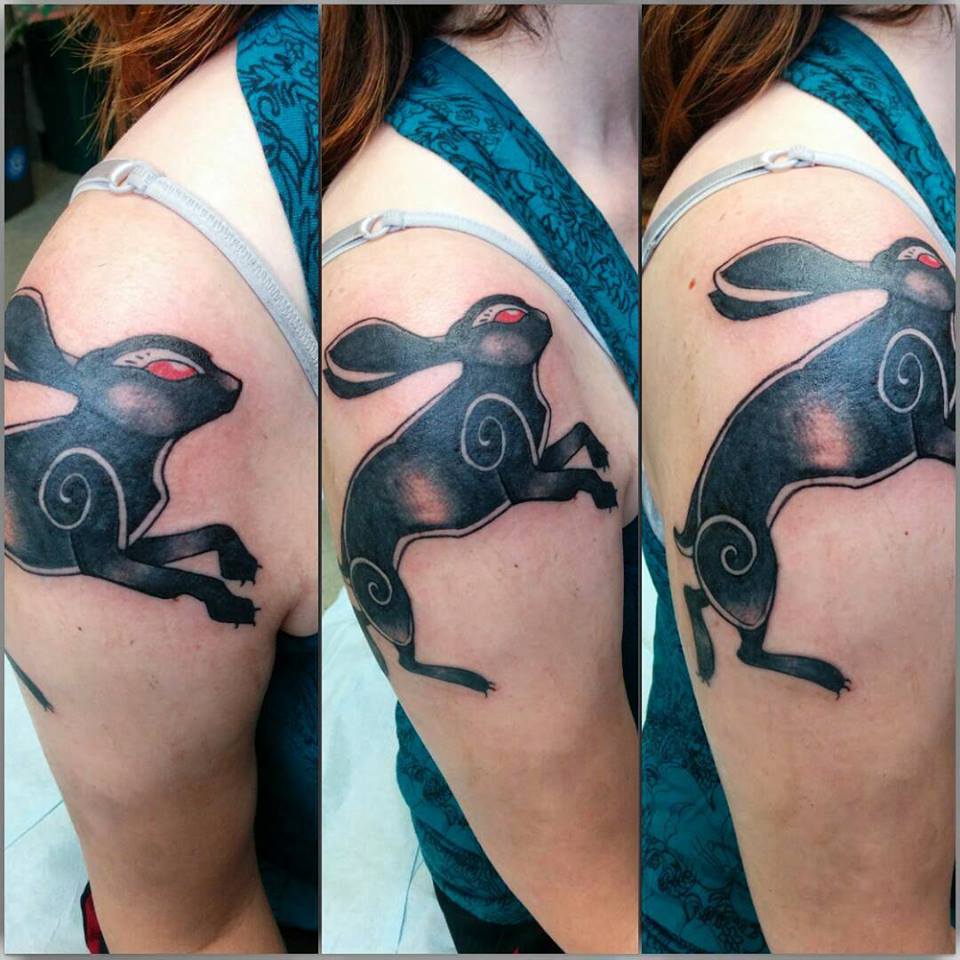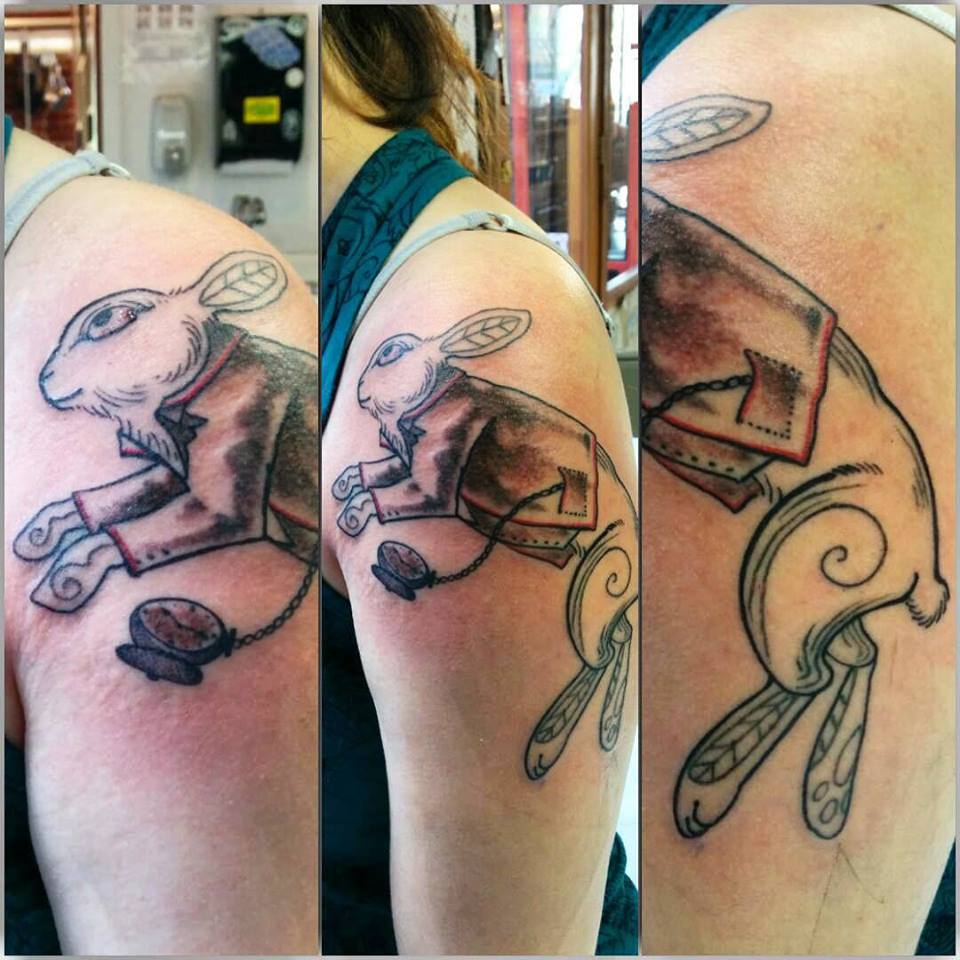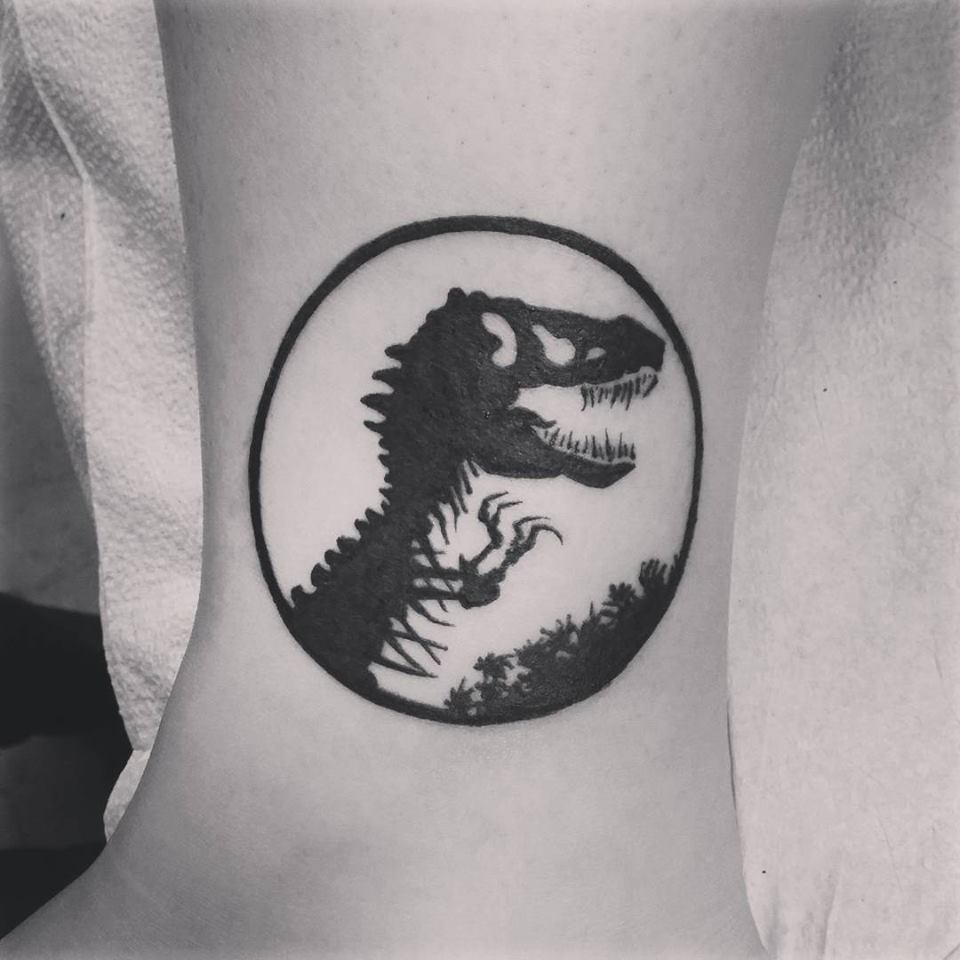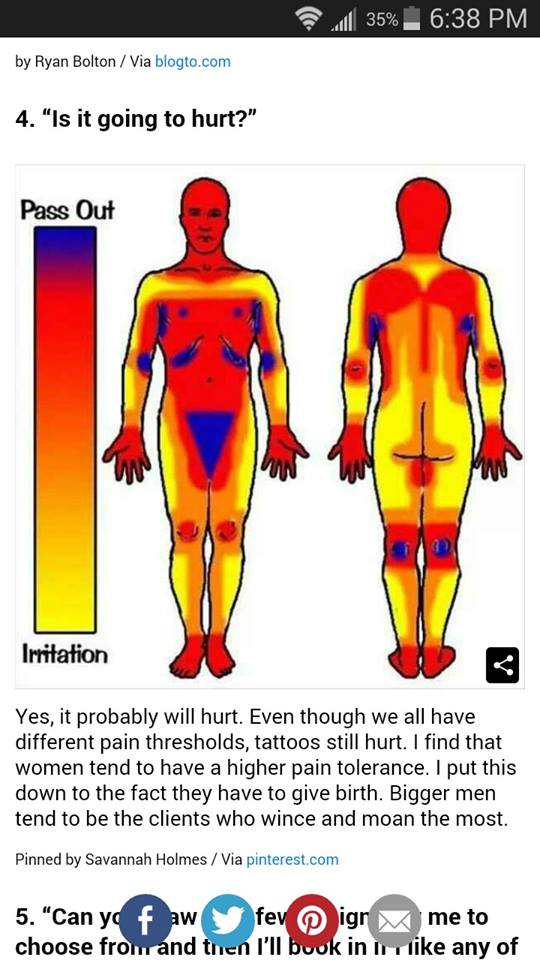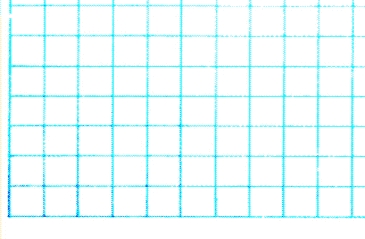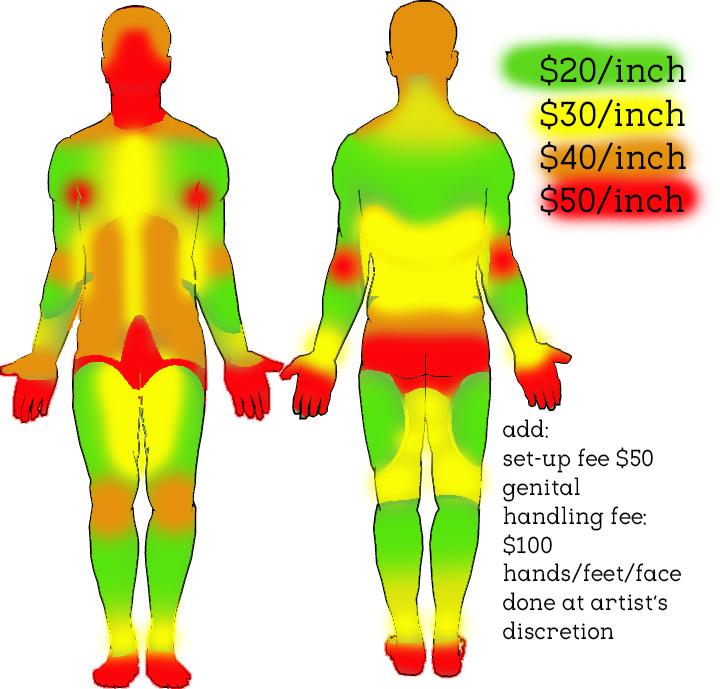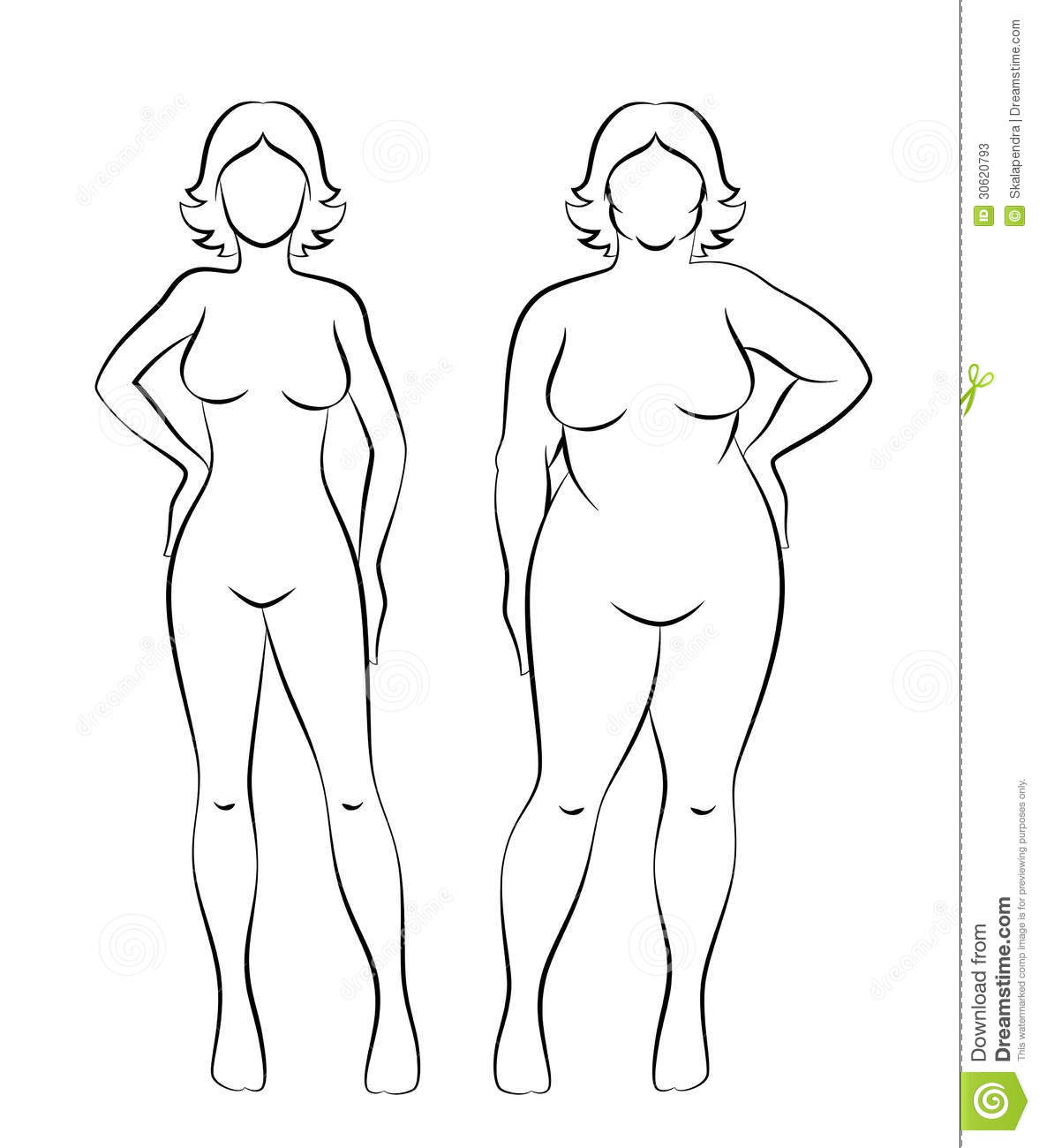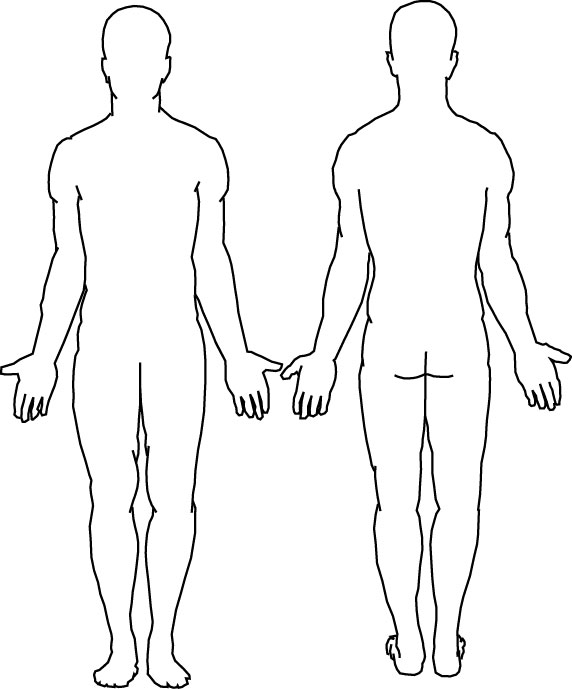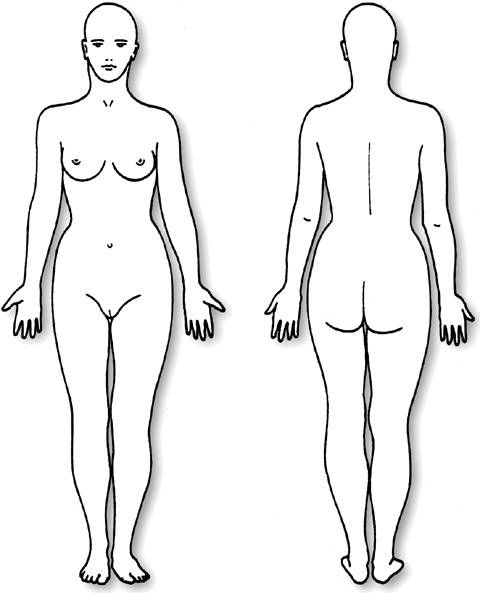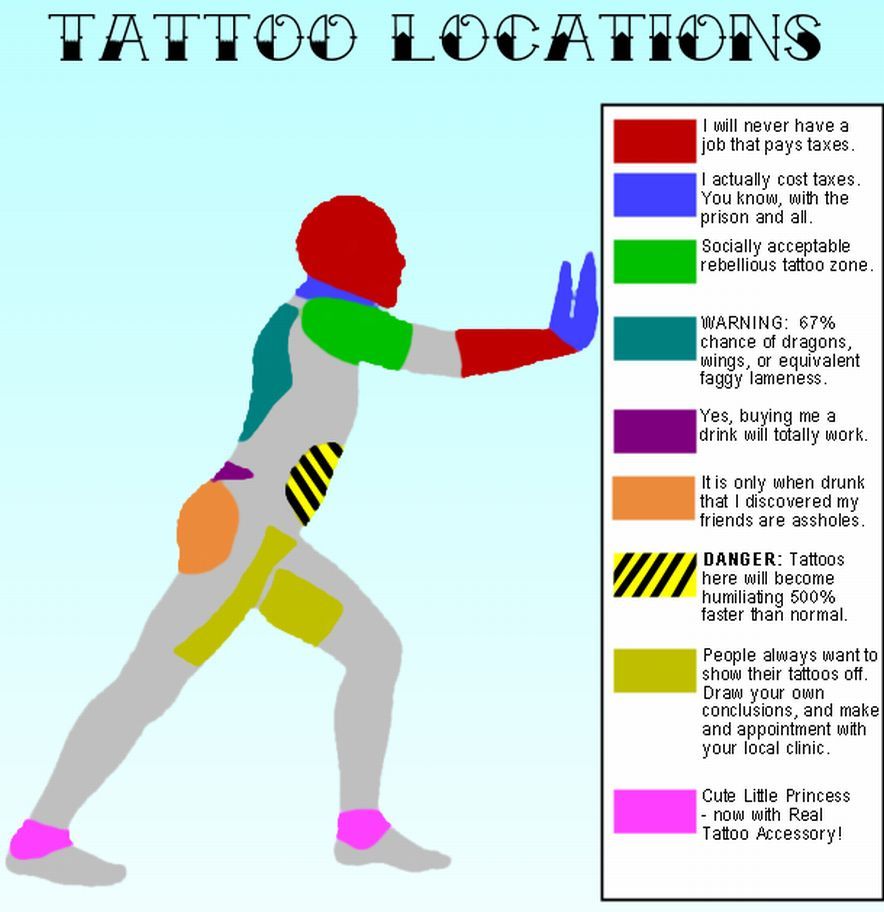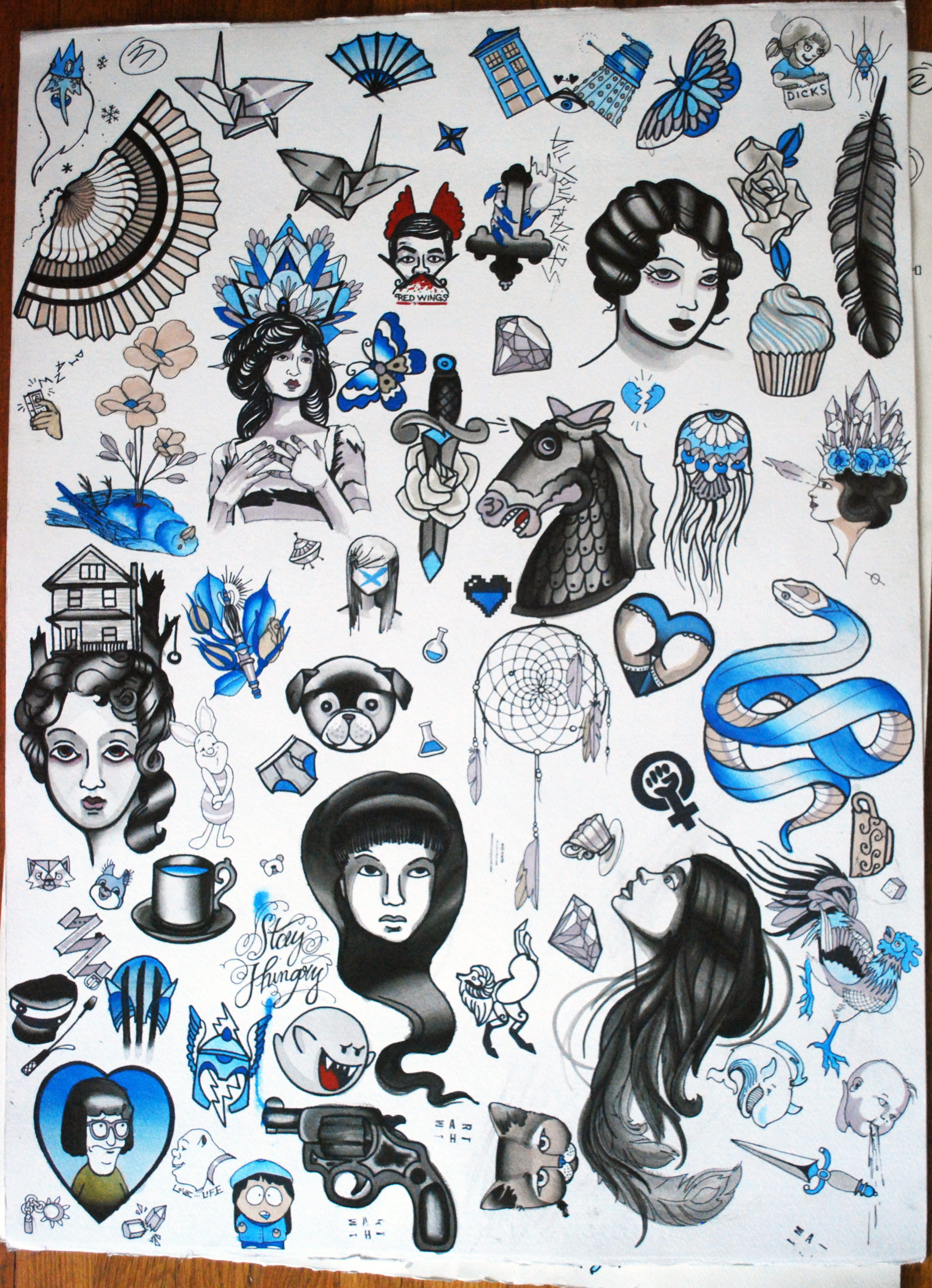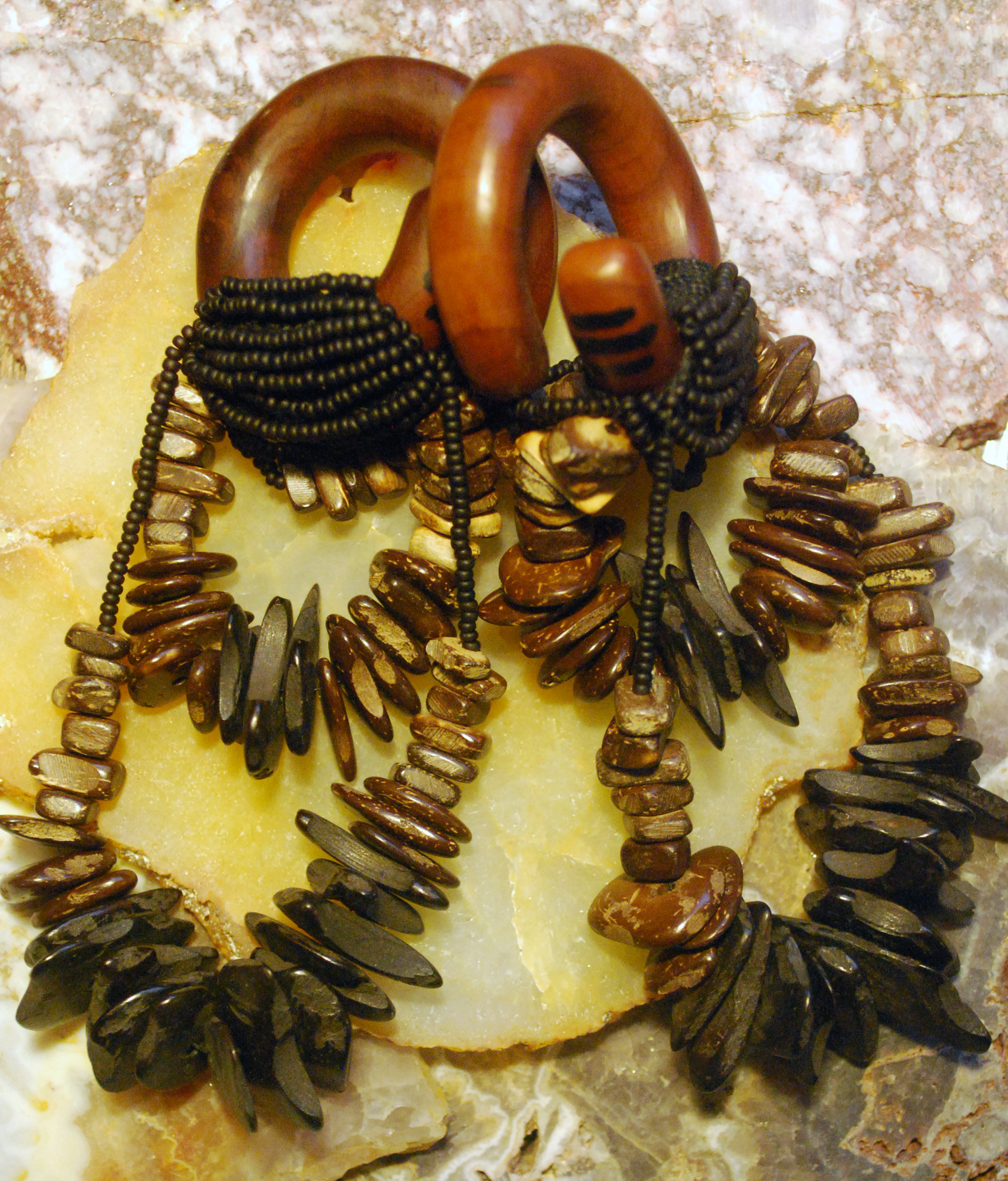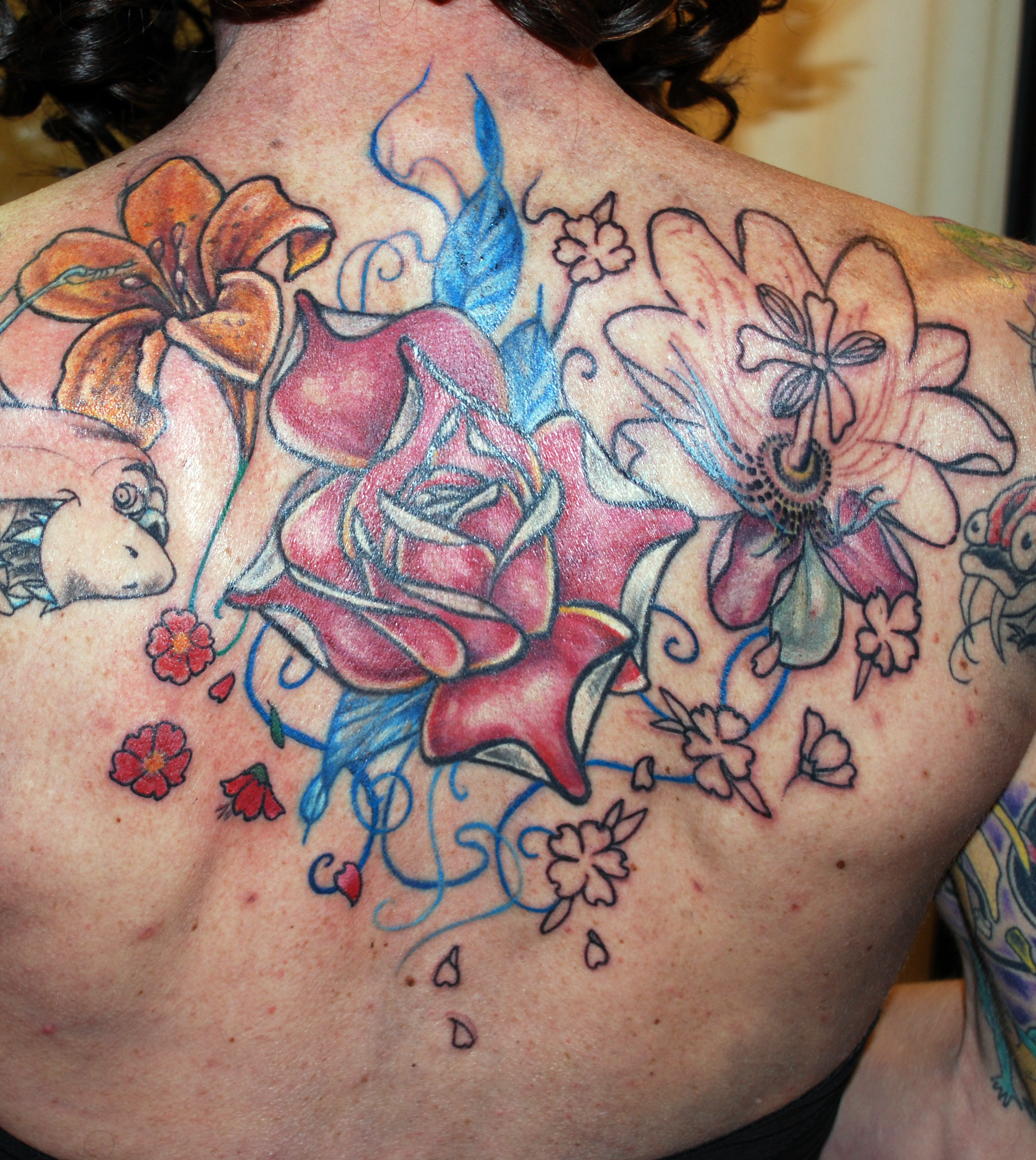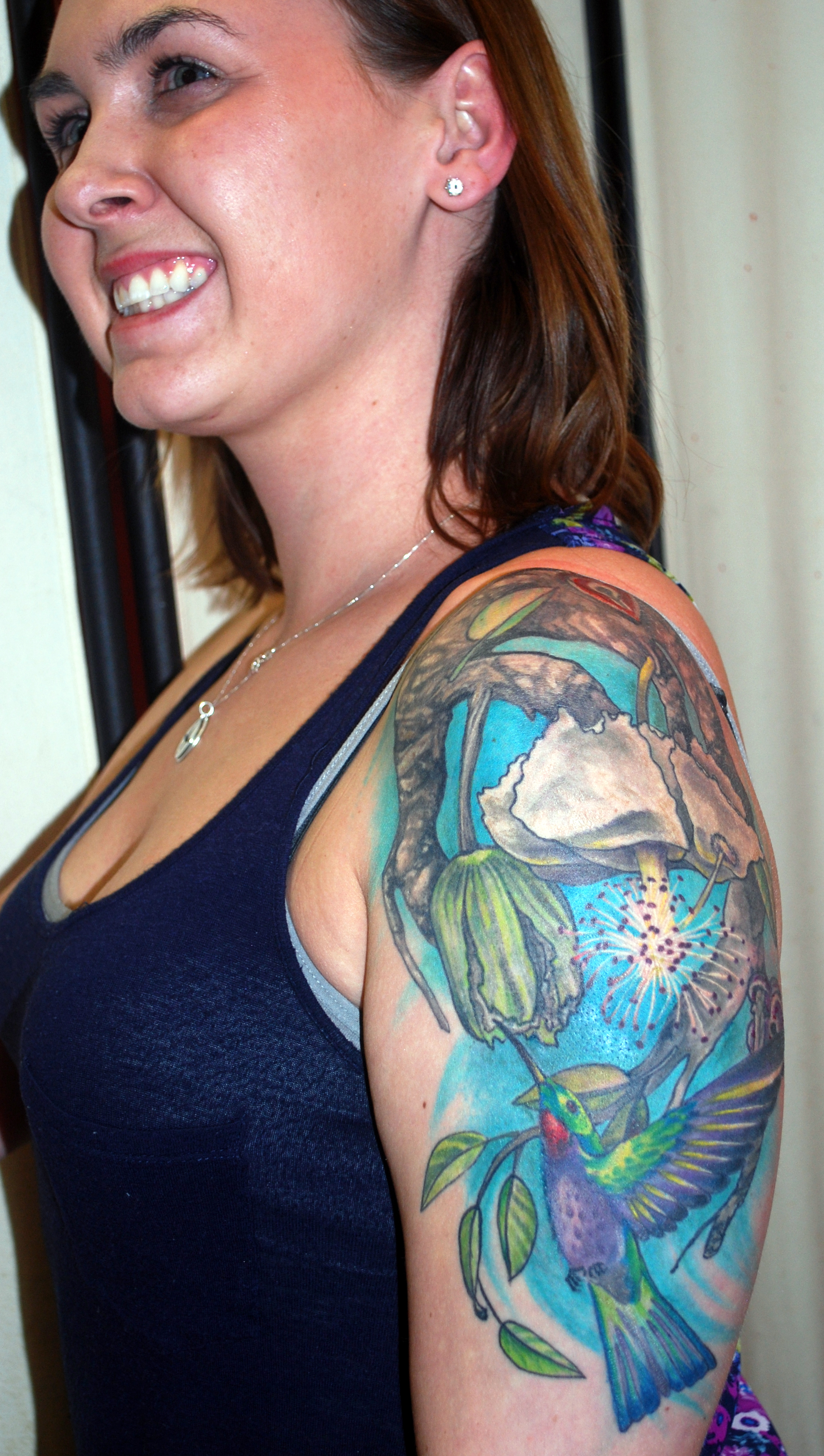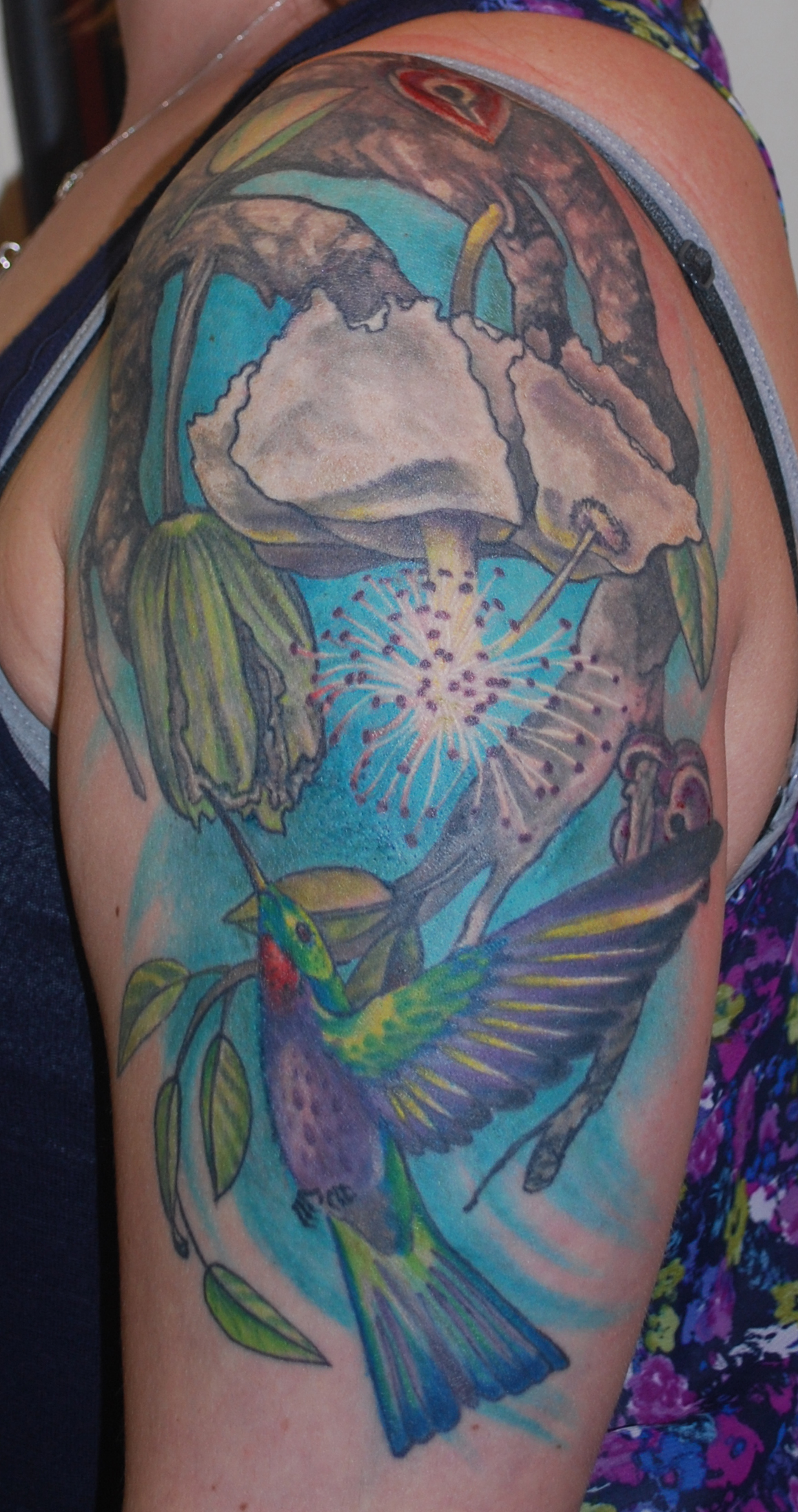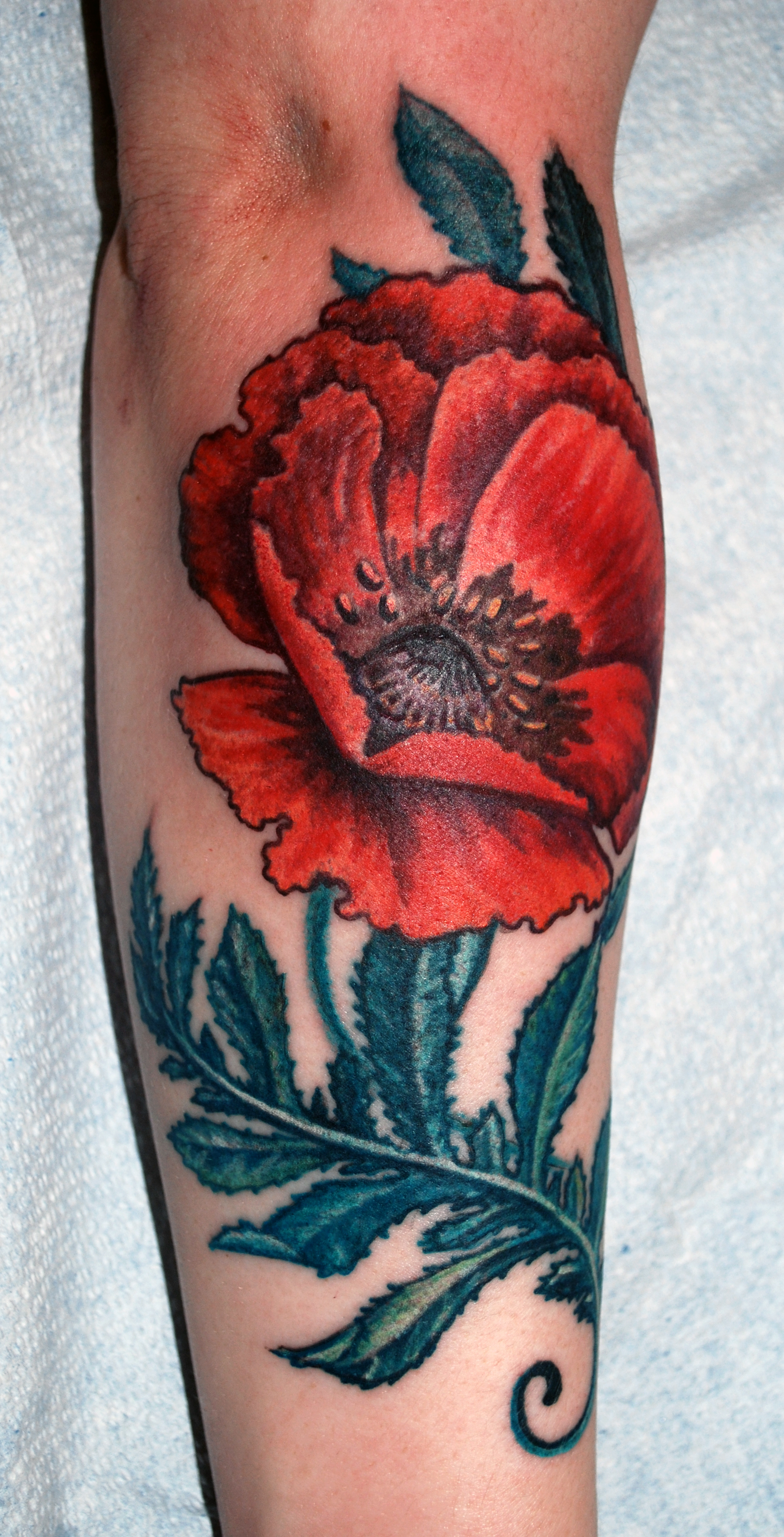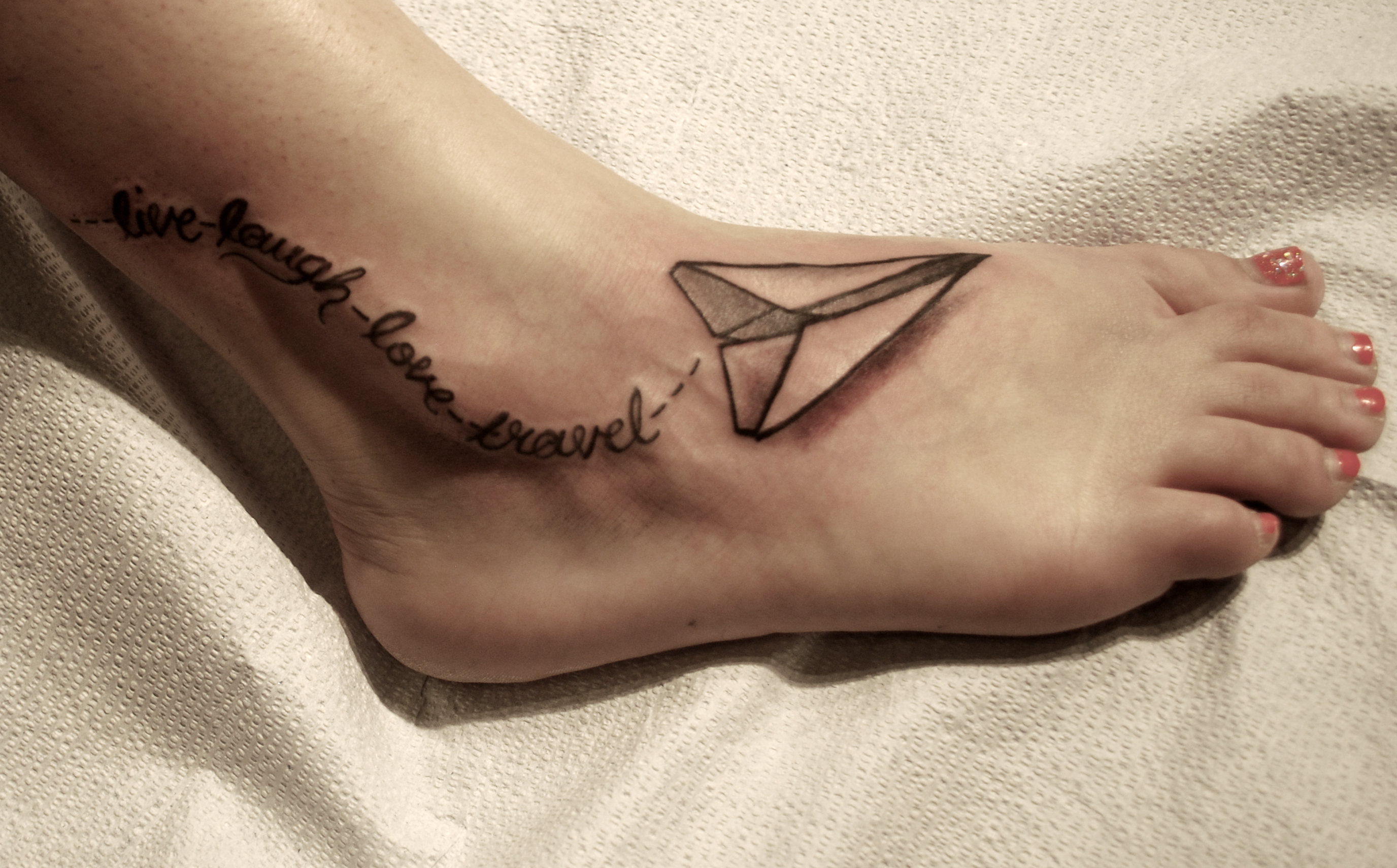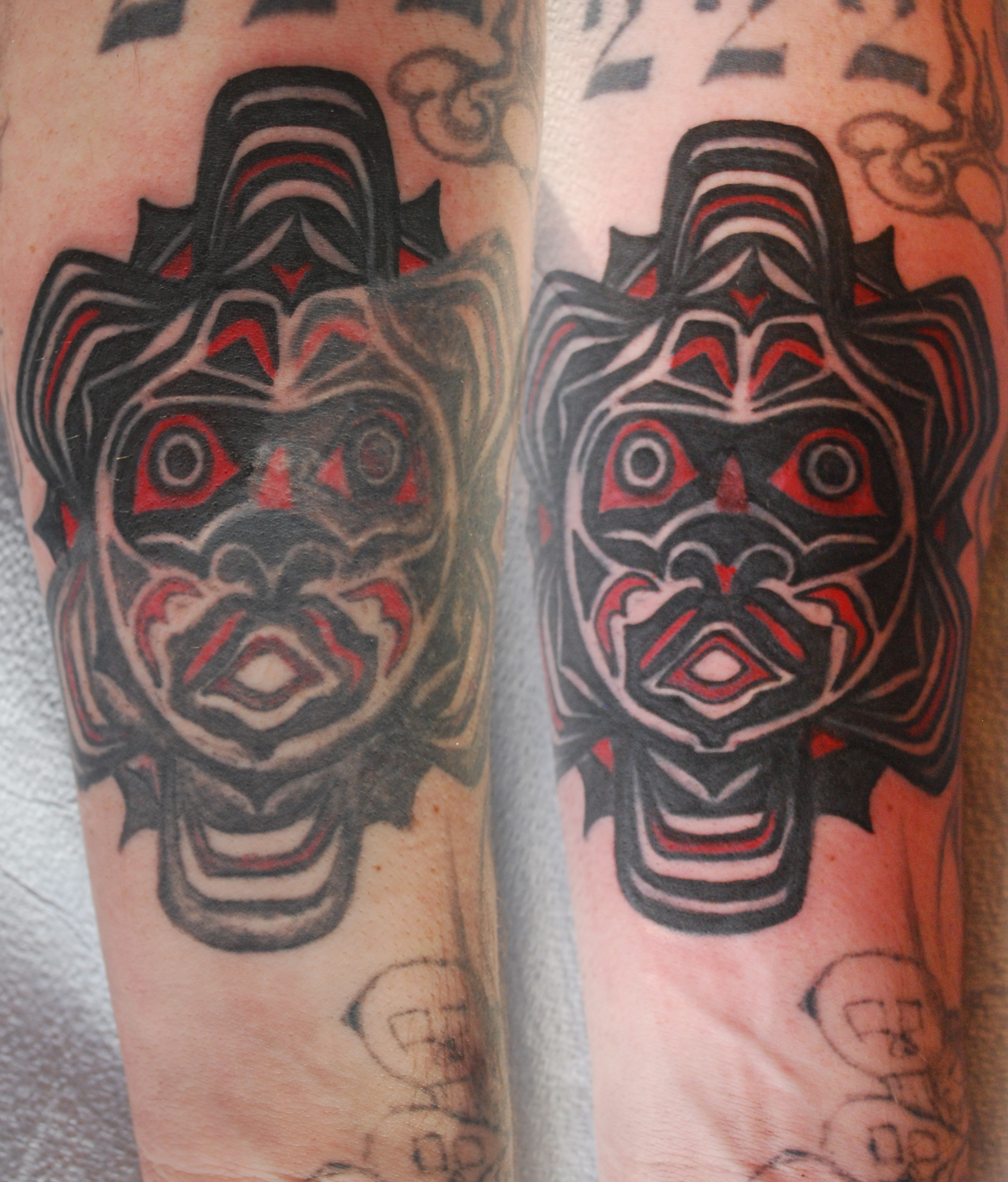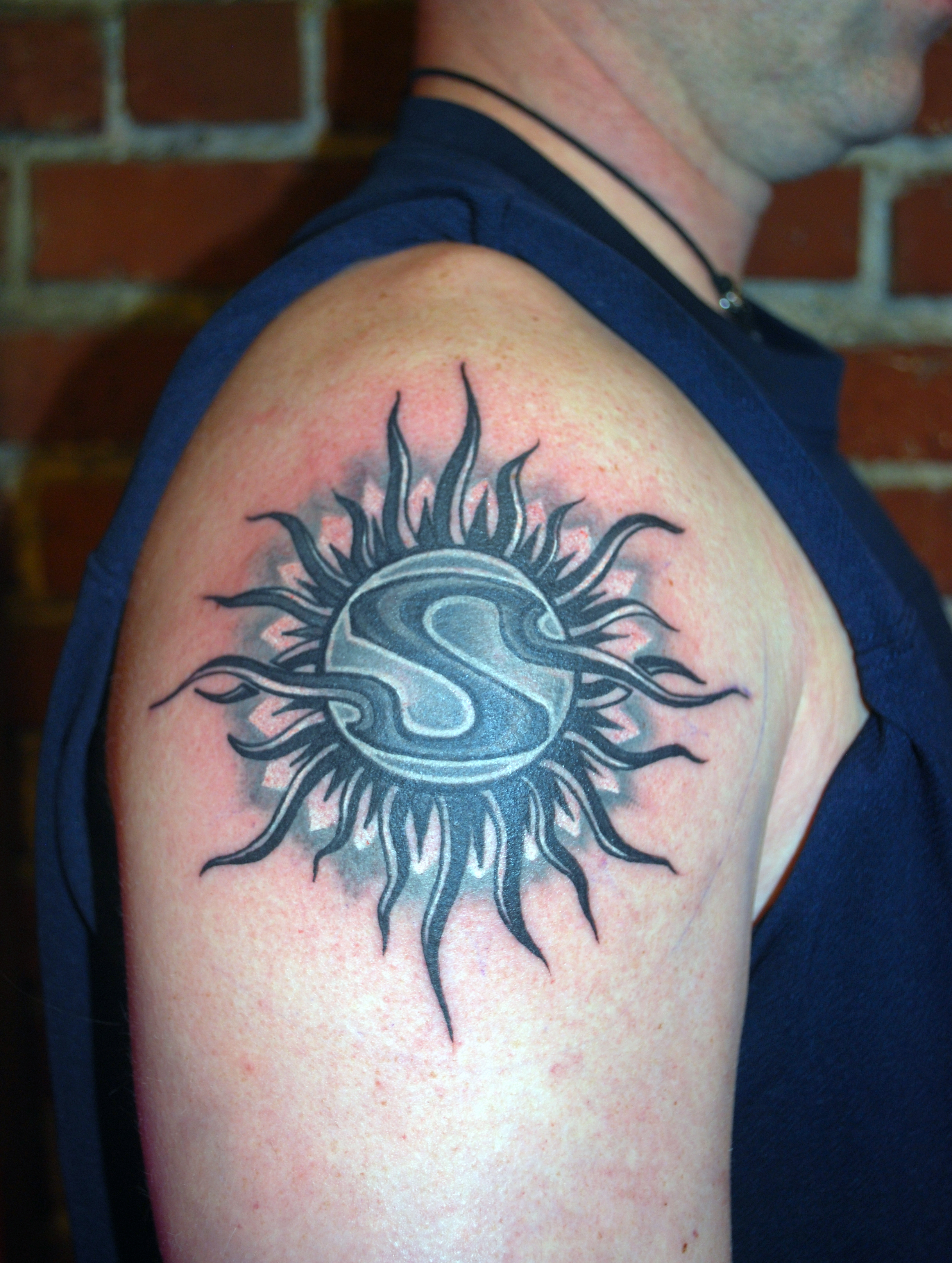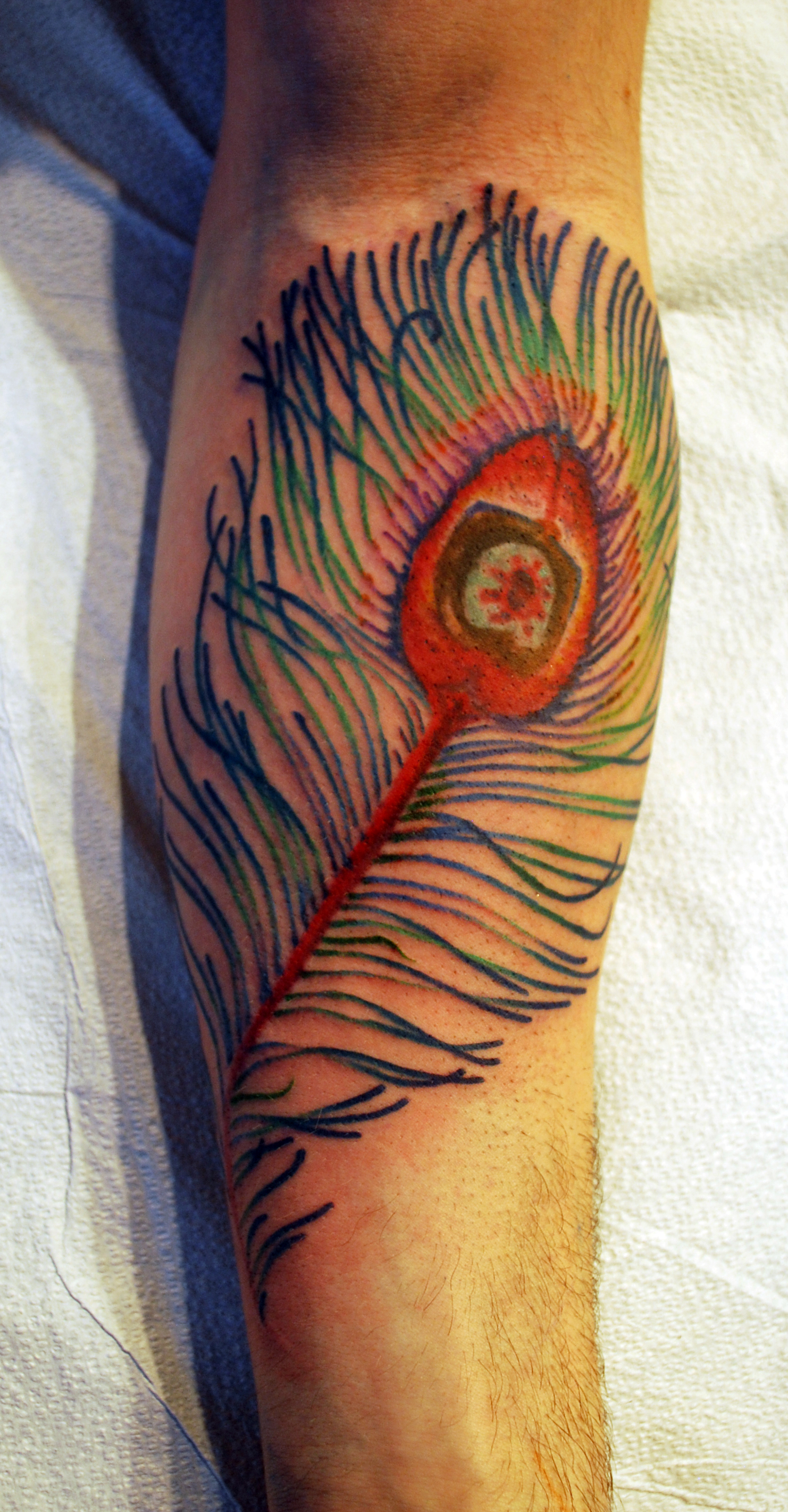so, you want a lot of words in your tattoo.
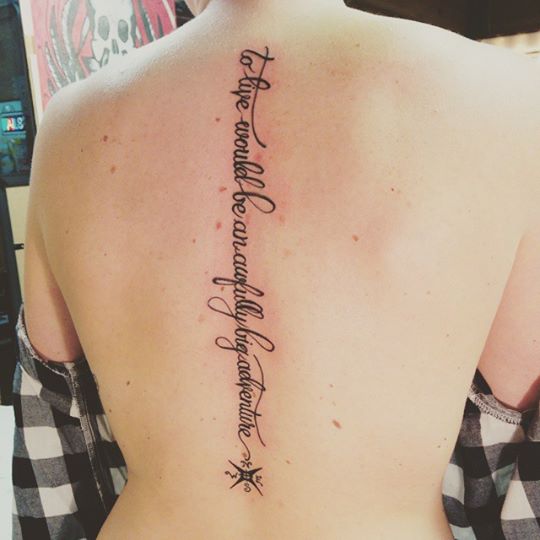 Tattoos of lettering are classic, of course. There’s nothing wrong with getting words tattooed on you. Sometimes, though, you can overdo it.
Tattoos of lettering are classic, of course. There’s nothing wrong with getting words tattooed on you. Sometimes, though, you can overdo it.
(This woman did not overdo it.)
For example, let’s say there’s a poem you really like. It’s four lines long. It goes like this:
Brave men who work while others sleep,
Who dare while others fly…
They build a nation’s pillars deep
And lift them to the sky.
(Emerson)
Or, another example:
The woods are lovely, dark, and deep,
But I have promises to keep,
And miles to go before I sleep,
And miles to go before I sleep.
(Frost)
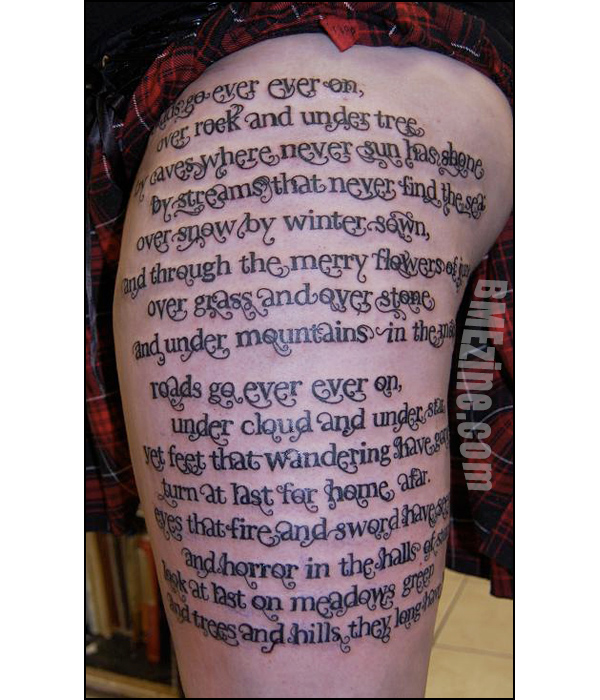
sometimes you really do want to dedicate a lot of skin to words. that’s ok, too, but only if it’s a flatter area where curving muscle won’t impede the reading of it.
These are lovely sentiments. On skin, however, with the limitations due to cellular changes over time, they wil end up being about ten inches across and six inches tall. That’s a HUGE area dedicated to text alone. Let’s say you want a tattoo of a hammer and some clouds, with that Emerson poem. Or you want some trees and a path, with that Frost quotation. What’s going to happen is the text is going to completely overwhelm the imagery, and dilute it.
Tattooing is a visual medium. The whole point of a symbolic tattoo is to take a concept (words) and use the tattoo (image) to express it. Adding lines and lines of text to an image….it’s a bit redundant. Like getting a tattoo of a bird with the word “BIRD” on it- unnecessary and really odd to look at, in the end.
You have choices here, of course.
- You can opt to get just the lettering, the text itself, alone. Well-done, large-enough text by itself is just fine. It will be bigger than you think, but it can look great. This is a good choice if the writing is from a friend or family member, a case in which the meaning of the words matters less than the exact words themselves. Or if you don’t want any images associated with the meaning on you, at all. In the first tattoo posted above, the client didn’t actually want Peter Pan or anything on her; she simply liked the text itself. Same with the Hobbit poem.
- You can get just an image that sums up and represents the text. For the Frost poem, a landscape of snowy woods, or a waiting horse next to some trees, would be pretty accurate to the poetry. Done in a bleak color scheme it would represent the sentiment of the poetry really well, too. This is really the best choice if the poem is well-known, or if it’s just the feeling and meaning of the poetry that you love so much.
- A third option is to narrow down the words you’ll add. For the Emerson poem, you could do a hammer and clouds with the words “Work, Courage” or something similar. Or use only one line of the poem, “Dare while others fly” as part of the design. (In a banner, or similar.) This gives you a bit of the poetry without losing the impact of the imagery as much. “miles to go before I sleep”, done in pale text, below a line of trees…that would be a good solution to using the Frost poem as a tattoo inspiration.

this poem, in full, would have taken up her entire side, leaving no room for the drawing of a woman representing her mother. (the poem in its entirety is on her mother’s headstone.)
I usually suggest to my wordy clients that they go with the third option- I love poetry and books, and think that a snippet of text in a tattoo can actually add to its impact. It also serves as a reminder to the person of the entire written piece. I usually limit the amount of text to about five words, maximum, if there’s any images being tattooed along with it.
If someone wants a very, very long quotation I will do it- but I usually suggest treating the text block as an abstract shape, making it curve to fit the body area being tattooed. It helps a little, and allows you to get neighboring tattoos later in life without too much fuss. Having a lot of straight lines on a floating block can really limit your future options.
If you want one word or short phrase, though, it’s easy. We can treat the text itself as an image, and make it fit. Simple lettering is really fun, playing with text forms is enjoyable and placement becomes a breeze. You can be selective in your quotation and still carry the meaning of the entire text pretty well.
